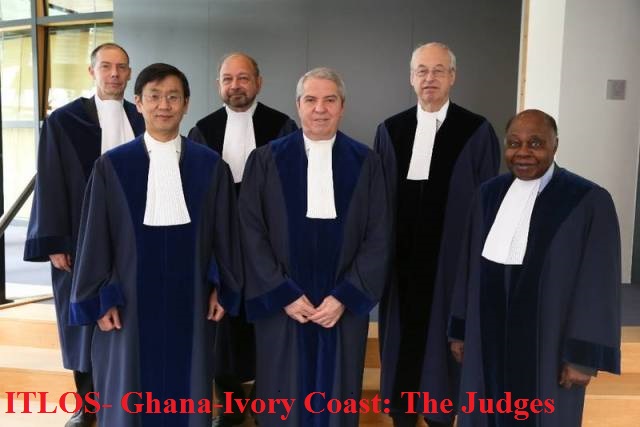Welcome
....to JusticeGhana Group

JusticeGhana is a Non-Governmental [and-not-for- profit] Organization (NGO) with a strong belief in Justice, Security and Progress....” More Details
The Prophecies Of Ghana-Ivorian Dispute
- Details
- Category: International Justice
- Created on Sunday, 10 May 2015 00:00
- Hits: 12098
 The Prophecies Of Ghana-Ivorian Dispute
The Prophecies Of Ghana-Ivorian Dispute
…International Maritime Law in Context- Equidistance, Relevant Circumstances and the “Disproportionality test” Examined
BRIEFS & COMMENTARY (PART II of II)
Learned Principal, in our earlier dispatch- “The Promises of Ghana-Ivorian Maritime Rifts”, we refreshed your memories on the historic but competing legal schools of thought on the LOS. We respectfully, focused your attention on the more recent delimitation maritime case involving Bangladesh and Myanmar. The rule in Articles 74 and 83 of the 1982 LOS Convention is that the delimitation of the exclusive economic zone/continental shelf with the opposite or adjacent coasts shell be effected by agreement on the basis of international law, as referred to in Art 38 of the Statute of the ICJ. The general principle puts emphasis on a State obligation to negotiate in good faith with a view to strike agreement. In absence of this, and unless another boundary line is justified by special circumstances, the boundary shall be determined by application of the principle of equidistance/median line from the nearest points of the baselines from which the breadth of the territorial sea of each State is measured. [9] This combined rule consisted of two substantive elements, equidistance and special circumstances. For this discussion, the Conference finally adopted the 1958 Geneva Conventions relating to respective maritime zones. [10]
Int.’Law in Context
The Sea-Bed Committee established by the General Assembly in 1968, to consider a preparatory committee for the new law of the sea, could not complete its preparatory work, so in December 1973, UNCLOS III was convened. It is found that the contradiction between the so-called pro-equidistance States and States favouring a concept of equity seriously hampered the negotiations and became a hard issue on the agenda of UNCLOS III. During the conference, the proponents of the equidistance line (for example: Denmark, Norway, United Kingdom, Canada, Greece, Italy, Japan) favoured the treatment of the equidistance/median line as a standard of delimitation. They insisted that it was the principle of international law governing delimitation cases, relying on Article 6 of the 1958 Convention on the Continental Shelf. They considered that the equitable principle standard was vague and subjective. Supporters of the equitable approach (for example: France, Turkey, Ireland, Kenya, Liberia, Libyan Arab Jamahiriya, Poland, Romania) objected to the very mention of the equidistance/median line as a standard for delimitation and rejected the elevation of that standard to the status of a basic principle. [11]
They relied on the decision of the first case brought before ICJ [the 1969 North Sea Continental shelf case- Federal Republic of Germany/Denmark; Federal Republic of Germany/Netherlands).], where the ICJ minimised the importance of the median/equidistance line of article 6 of the 1958 Continental Shelf Convention, and emphasized the equitable principle as customary international law on delimitation. Through this case, equidistance rule, ceased to be a principle and became merely one method among others. But the Court commented that it “has never been doubted that [this] method of delimitation is a very convenient one”and that “it would probably be true to say that no other method of delimitation has the same combination of practical convenience and certainty of application.” In these Briefs, we attempt to consider in abstract, the rulings/commentaries on the following cases: Bay of Bengal; the USA and Canada; Guinea/Guinea-Bissau; and not least, the Cameroon/Nigeria Case. India Case not considered.
- Prev
- Next >>




